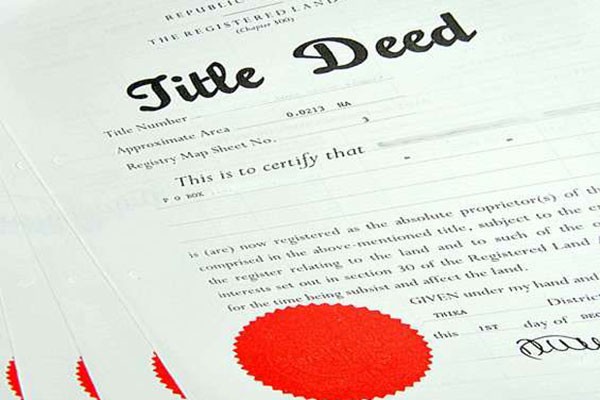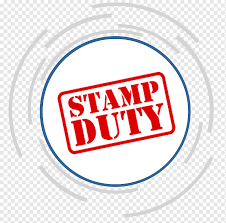Land registration is any of various systems by which matters concerning ownership, possession, or other rights in land are formally recorded (usually with a government agency or department) to provide evidence of title, facilitate transactions, and prevent unlawful disposal.
Picture this: you’re browsing your favourite social network, and you spot an advertisement for a piece of ‘prime property’, ‘good for development’, with a ‘ready title deed’, and what’s more, the price is just within the limits of your pocket! You laugh and think to yourself, ‘Kwani someone is spying on me? Wasn’t I just telling someone the other day how I need to buy a piece of land?’ (Let’s also assume that they’re genuine as well). You call the number provided, set up an appointment and in a few days you’re seated in a plush office within the city, ready to begin the process. They issue you with a document known as a Letter of Offer, or Heads of Terms, which contains all these legalese terms and also requires your signature, and the attestation of an Advocate, before they can proceed. What next?
land registratin process
First off, we advise you to retain the services of an Advocate to act on your behalf as the buyer. You can do this through referrals or through searching for the one closest to you on the LSK Search Engine here or here. In some instances, it is possible to have one Advocate act for both buyer and seller, provided there will be no conflict of interest. The purpose of retaining an Advocate is to have them break down the legalese into simple terms as well as secure your best interests in the transaction. Once you’ve retained an Advocate, their actions include:
- obtain an official postal search of the property, to ascertain, among other things, the legal ownership of the property, that the title is clean, that there are no impediments to transactions on the property (these are called encumbrances), and that the seller has the right to sell the property.
- attest the Offer Letter/Heads of Terms document you received, signifying your acceptance of their offer to buy the property from the seller and your willingness to proceed with the transaction. It is important to note that this document is not a binding contract, but denotes the intention of the undersigned parties to enter into a binding contract. To this end, at the top of the document, there should be the words ‘Subject to Contract’ written clearly (and in uppercase, if possible).
Note: The required documents to obtain an Official Search are a copy of the Title, which the buyer’s Advocate (your Advocate) gets from the seller or his Advocate, and a copy of the National Identity Card of the person applying for the search. This could be the Advocate themselves or one of their employees. The search is done at the applicable Land Registry Office. Let’s assume our piece of land is situated in Nairobi and its environs. The search would then be conducted at the Central Registry, which is situated at Ardhi House. Once they present themselves at the Registry, they will fill the required Land Search Application Form, and pay the search fee, which is K.Shs 500. They will then present the Form, Copy of Title and ID, and the receipt issued at the Registry Counter for the search to be conducted on the property. This process takes roughly two to three days, after which you can obtain the Official Search.
- The seller’s Advocate will then draft an Agreement of Sale and forward it to your Advocate for correction (where necessary) and execution (signature) within 14 days. Within these 14 days, the buyer’s Advocate (your Advocate) will draft a Transfer Instrument and forward the same to the seller’s Advocate for correction and execution, while also requesting them to provide them with Transfer Documents (also known as Completion Documents) for verification. The basic Transfer Documents are:
- The original Certificate of Title (or Lease, if applicable) for the property;
- Consent to Transfer from the National Land Commission (this takes roughly nine to twelve days to process, at a fee);
- Land Rent Clearance Certificate for the property, together with the Land Rent Payment Receipts;
- Land Rates Clearance Certificate from the relevant County Authority, together with the Payment Receipts;
- The Transfer Instrument, duly executed by the seller;
- The duly executed Sale Agreement, outlining the parties to the sale, the full description of the property, Advocates’ details, the selling price, how and when it is to be paid (including date of receipt of each instalment, where necessary), deposit amount and how it is to be held, date of completion and mode of termination of agreement, and what may lead to the said termination;
- Certified copies of the Seller’s I.D. and PIN Certificates;
- An affidavit of Spousal Consent to Sell by the seller’s spouse, or an Affidavit by the Seller stating that no spousal consent is necessary for the transaction.
Payment of Stamp Duty
Stamp Duty is a key requirement during land registration. It is tax payable, according to the Stamp Duty Act, on all land transactions involving change of ownership either through consideration (payment), gift, or partition of land, except where otherwise stipulated by the law. There are two stages of payment of Stamp Duty, the assessment and valuation stage, and the actual payment of Stamp Duty. The assessment and valuation stage of this process is usually handled by the Buyer’s (your) Advocate. The documents required and prepared by the Advocate are:
- The requisite application for valuation form in quadruplicate;
- A copy of the Official Land Search;
- The executed Transfer document;
- A certified copy of the Deed plan/route sketch/site map (as the situation requires);
- The buyer and seller’s passport pictures.
These documents are to be presented at the rightful counter at the Lands Office for assessment, with one copy of the application form retained by the applicant for follow up purposes. The assessment of the presented documents take about a maximum of two weeks.
Site visit of the property. The physical presence of the Government Valuer and the Registered Owner at this visit is mandatory. The purpose of this visit is to ascertain the actual value of the property vis a vis the declared value or the selling price. This is where assessment and valuation of the property takes place.
A brief valuation report is entered into the application form (above), and together with the valued Transfer document, is returned to the Lands Office for collection by the applicant. The Assessed Value and Duty Payable is indicated on the first page of the Transfer document.
Once valuation and assessment are complete, we move to the actual payment of Stamp Duty. It is usually charged at 4% of the value for leasehold properties situated within cities, towns or urban areas, and 2% of the value for freehold properties situated outside of cities, towns or urban areas. Stamp Duty must be paid within 30 days of assessment of value. Note: In Kenya, Stamp Duty is paid on the KRA’s iTax platform.
The Seller, individually or through their Advocates, using the Seller’s iTax profile, generates a Payment Registration or PRN form, for the payment of Capital Gains Tax, which is the tax on whatever profit made on the transaction – the difference between the selling price and the assessed value (known as the Capital Gain). This form has an acknowledgement number indicated on it. The form is then presented to a bank of choice by the Seller’s Advocate or agent for the payment of the amount indicated as CGT. Upon payment of CGT, the Buyer’s Advocate obtains the PRN form from the Seller’s Advocate, and using the acknowledgement number therein, generates a separate PRN form using the Buyer’s iTax profile for the payment of Stamp Duty. This PRN form is also presented to a bank of choice by the Buyer’s Advocate for the payment of the indicated amount.
Once Stamp Duty is paid, the assessed documents are presented at the relevant Registry Office by the Buyer’s Advocate or their agent for franking. Franking refers to the placement of an official mark by the relevant authority (in this case, the Collector of Stamp Duty) to indicate that the required tax has been paid or does not need to be paid (i.e., the instrument is exempt). The required documents for franking are the Transfer Instrument and its two Counterparts (Original copies), and the Stamp Duty Payment Receipt (both the form from iTax and the bank receipt). The franking process takes two to four days.
Once all these processes are complete, we can now proceed to registration. This is done by the Seller’s Advocate. An Application for Registration form (also known as a Booking Form) is filled, in triplicate while enclosing:
- The Transfer Document in triplicate;
- The Official Search Certificate;
- Consent to Transfer from the relevant authority;
- The Land Rent Clearance Certificate;
- The Land Rates Clearance Certificate;
- Certified copies of the I.D.s and PIN Certificates, together with passport pictures, of both the buyer and the seller.
Upon presentation at the Registry Counter, an application fee of K.Shs. 500 is charged and collected. The officer at the counter then verifies that the documents enclosed are those declared on the form, stamps all copies of the Booking form and returns one copy of the form to the applicant, with a Daybook Number clearly indicated on it. (The Daybook Number is the entry of that particular transaction, in this case, booking for registration, recorded in the events of that particular counter on that day, as they occur. The time is also recorded).
The Registration process should take 7 – 21 days, and the Advocate or their agent ought to keep following up at the counter using the Daybook Number provided.
Finally, once the documents are ready, the Advocate or their agent presents their copy of the Booking Form at the counter and receives the Transfer Document, in triplicate, registered in favour of the Buyer, together with a Certificate of Title, in the Buyer’s name. These documents are later given to the Buyer for their records and safekeeping.
Conclusion and Recommendation
The process outlined above details the most basic procedure followed while purchasing and registration of land, and we can also replace the term ‘land’ with ‘apartment’, although there would be an additional process included should one be using financing from a lender. Remember, always seek legal advice from a qualified Advocate or Land experts before getting into any contract or agreement so as to properly secure your rights and to better understand all the issues involved in the transaction.
Now, go forth and buy that property and check off ‘buy land/property‘ from your bucket list!
“If you found this article helpful, consider supporting our work to keep creating valuable content.”





